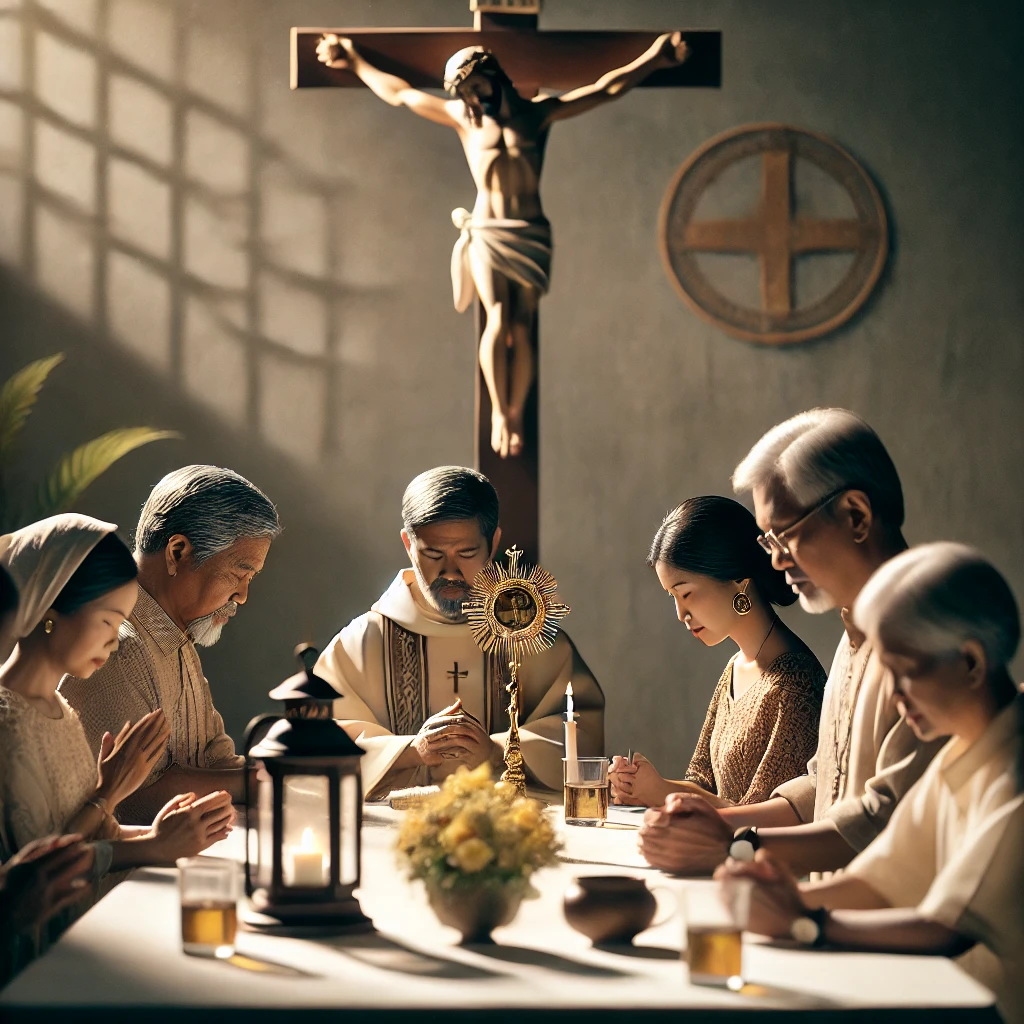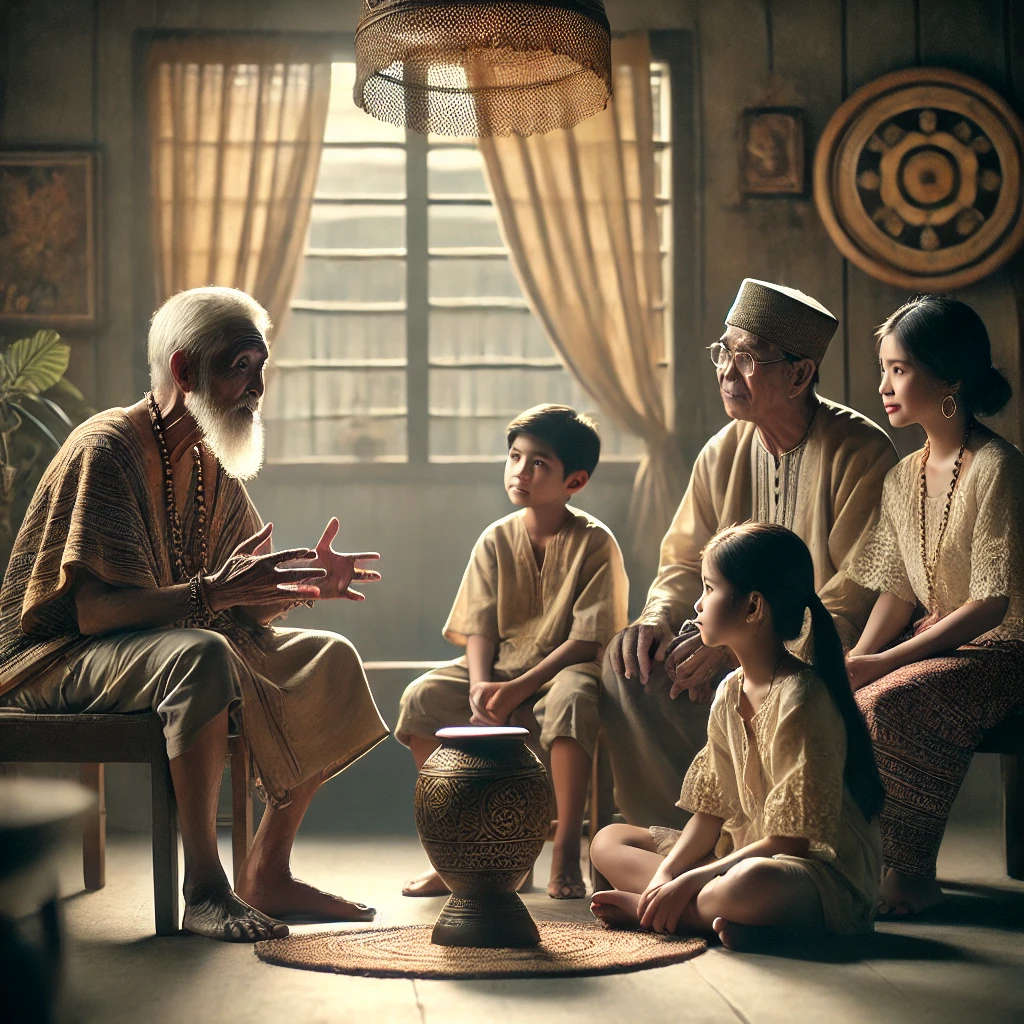The Philippines, an archipelagic nation in Southeast Asia, has a rich and complex cultural tapestry that has been significantly influenced by its colonial history. Among the most enduring legacies of this history is the deep-rooted presence of Catholicism, which has played a pivotal role in shaping Filipino values, traditions, and social norms. This blog post delves into the multifaceted influence of Catholicism on Filipino values, exploring how this religious tradition has become interwoven with the cultural fabric of the nation. We will examine the historical context of Catholicism’s arrival in the Philippines, its impact on various aspects of Filipino life, and the ways in which it continues to shape the values and worldview of millions of Filipinos today. By understanding this influential relationship, we can gain valuable insights into the unique cultural identity of the Filipino people and the complex interplay between religion, values, and national character.
The Arrival and Spread of Catholicism in the Philippines
Spanish Colonial Era and Religious Conversion
The arrival of Catholicism in the Philippines can be traced back to the Spanish colonial era, which began in the 16th century. In 1521, Ferdinand Magellan, a Portuguese explorer sailing for the Spanish crown, reached the shores of the Philippines, marking the beginning of Spanish influence in the archipelago. With the Spanish colonizers came Catholic missionaries, primarily from religious orders such as the Augustinians, Franciscans, Dominicans, and Jesuits. These missionaries embarked on a systematic effort to convert the indigenous population to Catholicism, a process that would profoundly shape the cultural and religious landscape of the Philippines for centuries to come.
The Spanish colonial administration implemented a policy known as “reducción,” which involved resettling indigenous communities into centralized locations called “pueblos” or towns. This policy facilitated the process of religious conversion and administrative control. Within these pueblos, the Catholic Church became a central institution, with the parish church often serving as the focal point of community life. The missionaries not only introduced Catholic doctrine but also established schools, hospitals, and other social institutions, further embedding the Church’s influence in Filipino society.
Syncretic Practices and Indigenous Adaptation
As Catholicism spread throughout the Philippines, it encountered and interacted with existing indigenous beliefs and practices. This interaction led to the development of syncretic religious practices, where elements of pre-colonial animistic beliefs were incorporated into Catholic rituals and devotions. For example, the veneration of nature spirits was often translated into devotion to specific Catholic saints associated with natural phenomena. This blending of indigenous and Catholic traditions created a unique form of Filipino Catholicism that remains distinctive to this day.
The process of religious conversion and cultural adaptation was not uniform across the archipelago. In some regions, particularly in the highlands and remote areas, indigenous beliefs remained more prevalent. However, in the lowlands and urban centers, Catholicism became deeply entrenched, shaping not only religious practices but also social norms, values, and cultural traditions. By the end of the Spanish colonial period in 1898, an estimated 80% of the Philippine population had converted to Catholicism, making it the dominant religion in the country.
The Impact of Catholicism on Filipino Family Values
The Centrality of Family in Filipino Culture
One of the most significant areas where Catholicism has exerted its influence is in the realm of family values. The Filipino family is often described as the foundation of society, and this emphasis on family ties aligns closely with Catholic teachings on the importance of the family unit. Catholic doctrine emphasizes the sanctity of marriage, the importance of raising children in the faith, and the mutual responsibilities of family members towards one another. These teachings have reinforced and shaped Filipino family values, contributing to the strong familial bonds that are characteristic of Filipino culture.
In Filipino society, the extended family network plays a crucial role, with multiple generations often living together or in close proximity. This extended family structure is supported by Catholic teachings on solidarity and mutual support within the family. The practice of “compadrazgo,” or godparenthood, further extends these family networks, creating spiritual kinship ties that are taken as seriously as blood relations. This system of extended family and spiritual kinship serves as a social safety net and reinforces the interconnectedness of Filipino communities.
Marriage and Family Planning
Catholic teachings on marriage and reproduction have had a significant impact on Filipino family values and practices. The Church’s stance on the sanctity of marriage has contributed to the high value placed on marital fidelity and the relative rarity of divorce in Philippine society. Until recently, the Philippines was one of the few countries in the world where divorce was not legally recognized, a situation that reflected the strong influence of Catholic doctrine on family law.
The Catholic Church’s position on contraception and family planning has also been a contentious issue in Philippine society. The Church’s opposition to artificial birth control methods has historically influenced government policies on reproductive health and family planning. This influence has contributed to the Philippines having one of the highest fertility rates in Southeast Asia, although recent years have seen shifts in both policy and public opinion on this issue.
Catholicism and Filipino Moral Values
The Concept of “Utang na Loob” (Debt of Gratitude)
One of the core Filipino values that has been reinforced by Catholic teachings is the concept of “utang na loob,” or debt of gratitude. This value emphasizes the importance of reciprocity and the obligation to repay kindness or favors received. While this concept has pre-colonial roots, it aligns closely with Catholic teachings on gratitude, charity, and social responsibility. The Catholic emphasis on giving thanks to God and showing gratitude for blessings received has reinforced and given additional spiritual significance to this traditional Filipino value.
In practice, “utang na loob” manifests in various aspects of Filipino social interactions, from personal relationships to professional contexts. It creates a web of mutual obligations and reciprocal favors that strengthens social bonds and promotes a sense of community. This value system aligns with Catholic social teachings on solidarity and the common good, further reinforcing its importance in Filipino culture.
Compassion and Social Justice
Catholic social teachings, particularly those emphasizing compassion for the poor and the pursuit of social justice, have had a significant impact on Filipino moral values. The Philippines has a long history of social inequality and economic disparities, and the Catholic Church has often played a role in advocating for the rights of the marginalized and promoting social welfare initiatives. This emphasis on social justice aligns with traditional Filipino values of “bayanihan” (communal unity) and “pakikisama” (getting along with others), creating a strong cultural foundation for social activism and community service.
The influence of Catholic social teachings can be seen in various aspects of Philippine society, from the prevalence of faith-based charitable organizations to the active involvement of the Church in social and political issues. Many Filipino Catholics view social engagement and advocacy for the poor as integral parts of their faith, reflecting the deep integration of Catholic values into Filipino moral and ethical frameworks.
Catholicism and Filipino Political Culture
The Church as a Political Force
The Catholic Church has historically played a significant role in Philippine politics, reflecting its deep influence on Filipino values and social norms. The Church’s involvement in political affairs can be traced back to the Spanish colonial era, where it served as a powerful institution alongside the colonial government. In the post-independence period, the Church has continued to exert influence on political processes and public policy debates, particularly on issues related to family, morality, and social justice.
One of the most notable examples of the Church’s political influence was its role in the People Power Revolution of 1986, which led to the overthrow of the Marcos dictatorship. The Catholic hierarchy, led by Cardinal Jaime Sin, played a crucial role in mobilizing public support for the peaceful revolution, demonstrating the Church’s capacity to influence political outcomes through moral suasion and popular mobilization.
Table: Key Political Events Influenced by the Catholic Church in the Philippines
| Year | Event | Church’s Role |
|---|---|---|
| 1986 | People Power Revolution | Mobilized public support, provided moral leadership |
| 1991 | Rejection of US Bases Agreement | Advocated for non-renewal of military base agreements |
| 2001 | EDSA II Revolution | Supported protests against President Joseph Estrada |
| 2012 | Reproductive Health Bill Debate | Opposed the bill, influencing public opinion and legislative process |
Separation of Church and State
While the Catholic Church has been influential in Philippine politics, the country’s constitution enshrines the principle of separation of church and state. This principle has led to ongoing debates about the appropriate role of religious institutions in political affairs. The tension between the Church’s moral authority and the secular nature of the state has been a recurring theme in Philippine politics, influencing debates on issues such as reproductive health, divorce, and same-sex relationships.
Despite constitutional provisions for secularism, the deep-rooted influence of Catholicism on Filipino values continues to shape political discourse and policy-making processes. Many Filipino politicians invoke religious language and values in their campaigns and governance, reflecting the importance of Catholic identity in the country’s political culture.
Catholicism and Filipino Education
The Catholic School System
One of the most significant ways in which Catholicism has influenced Filipino values is through the education system. Catholic educational institutions have played a crucial role in shaping the minds and values of generations of Filipinos. The Spanish colonial administration, in collaboration with Catholic religious orders, established the first formal educational institutions in the Philippines. These schools not only provided academic instruction but also served as centers for religious education and cultural assimilation.
In the post-independence era, the Catholic school system has continued to be a major force in Philippine education. As of 2017, there were over 1,300 Catholic schools in the Philippines, ranging from elementary schools to universities. These institutions often enjoy a reputation for academic excellence and moral formation, attracting students from both Catholic and non-Catholic backgrounds.
Values Education and Moral Formation
Catholic schools in the Philippines place a strong emphasis on values education and moral formation, integrating Catholic teachings into various aspects of the curriculum. This approach to education has had a significant impact on shaping the values and worldview of many Filipinos, even those who later pursue secular careers or adopt different belief systems.
The values emphasized in Catholic education often align closely with traditional Filipino values, creating a synergy between religious teachings and cultural norms. For example, the Catholic emphasis on compassion, social responsibility, and respect for authority reinforces similar values in Filipino culture. This integration of Catholic and Filipino values in the educational system has contributed to the deep-rooted influence of Catholicism on Filipino society as a whole.
Catholicism and Filipino Popular Culture
Religious Festivals and Traditions
Catholicism has left an indelible mark on Filipino popular culture, particularly in the realm of festivals and traditions. Many of the most widely celebrated events in the Philippine calendar are religious in nature, reflecting the deep integration of Catholic traditions into Filipino cultural life. These festivals not only serve as expressions of religious devotion but also as important social and cultural events that bring communities together and reinforce shared values.
One of the most prominent examples is the celebration of Christmas, which in the Philippines begins as early as September and extends well into January. The “Simbang Gabi” or pre-dawn masses leading up to Christmas Eve are a unique Filipino tradition that combines religious devotion with community celebration. Other significant religious festivals include Holy Week, which is marked by elaborate processions and passion plays, and various feast days of patron saints celebrated in different regions of the country.
Table: Major Catholic Festivals in the Philippines
| Festival | Date | Description |
|---|---|---|
| Simbang Gabi | December 16-24 | Pre-dawn masses leading up to Christmas |
| Holy Week | March/April (varies) | Passion plays, processions, penitential rituals |
| Feast of the Black Nazarene | January 9 | Procession of the Black Nazarene statue in Manila |
| Sinulog Festival | Third Sunday of January | Celebration honoring the Santo Niño in Cebu |
| Feast of Our Lady of Peñafrancia | Third Saturday of September | Fluvial procession in Naga City |
Religious Imagery in Art and Media
Catholic imagery and themes are pervasive in Filipino art, literature, and media. Religious symbols, particularly images of the Virgin Mary, the Santo Niño (Child Jesus), and various saints, are commonly found in homes, businesses, and public spaces. This ubiquitous presence of religious imagery reflects the deep integration of Catholic symbolism into Filipino visual culture.
In literature and popular media, Catholic themes and moral values often feature prominently. Filipino films and television shows frequently incorporate religious elements, whether as central themes or as background cultural context. This pervasive presence of Catholic imagery and narratives in popular culture reinforces the influence of Catholic values on Filipino society and contributes to the ongoing relevance of religious themes in public discourse.
Challenges and Evolving Perspectives
Secularization and Changing Social Norms
While Catholicism remains a dominant force in shaping Filipino values, the country has also experienced trends of secularization and changing social norms in recent decades. Increased exposure to global cultural influences, urbanization, and rising education levels have led to more diverse perspectives on social and moral issues. This has sometimes resulted in tensions between traditional Catholic teachings and evolving social attitudes, particularly on issues such as reproductive health, LGBTQ+ rights, and gender equality.
The Catholic Church in the Philippines has had to navigate these changing social dynamics, sometimes adapting its approach to remain relevant to younger generations while maintaining its core doctrinal positions. This tension between tradition and modernization reflects the ongoing negotiation of Catholic influence in contemporary Filipino society.
Religious Pluralism and Interfaith Dialogue
Although Catholicism is the majority religion in the Philippines, the country is home to significant religious minorities, including Muslims, Protestants, and indigenous belief systems. The constitutional guarantee of religious freedom has fostered a climate of religious pluralism, challenging the historical dominance of Catholicism in some aspects of public life.
In recent years, there has been an increased emphasis on interfaith dialogue and cooperation, reflecting a growing recognition of religious diversity in Filipino society. This trend towards greater religious pluralism has led to discussions about the role of Catholic values in a multi-faith context and the importance of fostering mutual understanding and respect among different religious traditions.
The Enduring Legacy of Catholic Influence
The influence of Catholicism on Filipino values remains a defining feature of Philippine culture and society. From family structures and moral frameworks to political engagement and popular culture, Catholic teachings and traditions have become deeply interwoven with Filipino identity. This influence has created a unique cultural synthesis that distinguishes Filipino Catholicism from its expressions in other parts of the world.
As the Philippines continues to navigate the challenges of modernization and globalization, the role of Catholic values in shaping Filipino identity and social norms remains a subject of ongoing negotiation and reflection. The enduring legacy of Catholic influence serves as a testament to the complex interplay between religion, culture, and national identity in the Philippine context.
Understanding this influence is crucial not only for appreciating the cultural heritage of the Philippines but also for navigating the contemporary social and political landscape of the country. As Filipino society continues to evolve, the dynamic relationship between Catholic traditions and changing social realities will undoubtedly remain a central aspect of the nation’s cultural discourse.
Disclaimer: This blog post is based on historical information and data available up to 2017. While every effort has been made to ensure accuracy, readers are encouraged to consult more recent sources for the most up-to-date information on this topic. If you notice any inaccuracies, please report them so we can correct them promptly.




